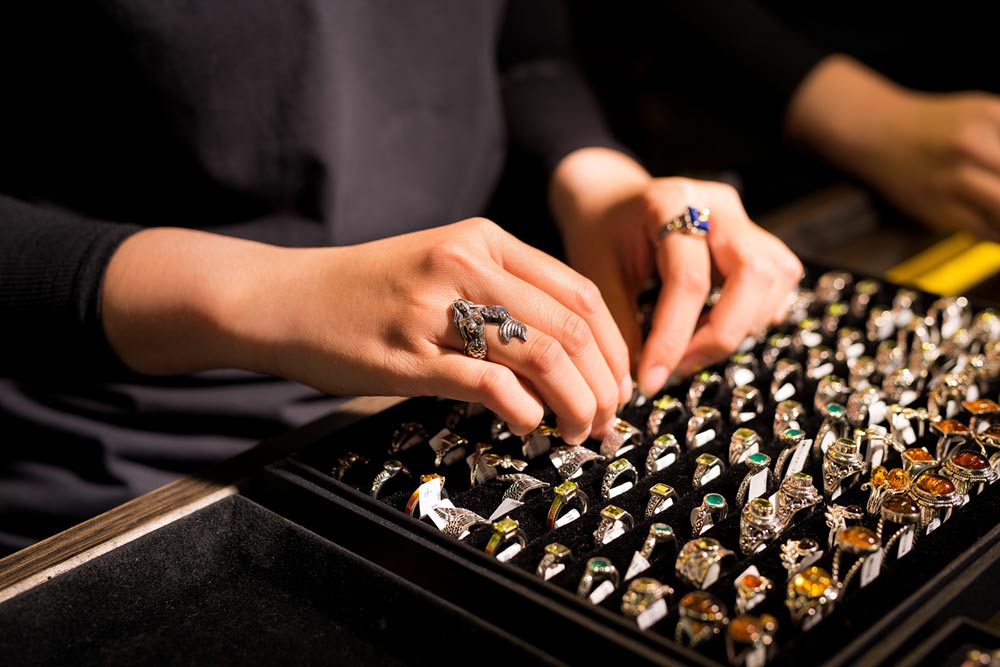6 mistakes that can ruin one’s jewelry

A piece of jewelry can complement one’s outfit in many ways. Though matching an outfit and jewelry can be difficult, it surely is a gratifying process. However, things may sometimes not work as well as one had pictured them. It can be because the jewelry no longer seems as pristine as it was originally. This could result from certain common mistakes people make with their jewelry. That said, here are some jewelry mistakes one must avoid.
Not storing jewelry properly
Proper storage of jewelry is important for its longevity and appearance. It’s not just the duration the jewelry is worn that can impact its appearance and condition. The constant exposure to free-flowing air particles and humidity can impact how the jewelry pieces fare. This is where people understand the importance of jewelry boxes. They have a proper place for each piece, which also takes care of increased air exposure. The separate place for each piece also means the jewelry won’t scratch and tangle with each other, increasing their life.
Gardening with jewelry on
It is important to take care of the jewelry before gardening. Before one decides to prune the garden and look after the seasonal blooms, it is important to remove the engagement ring and the other valuable jewelry one may be wearing. As gardening often involves increased contact with dirt and water, working on hands and knees for more time, and dealing with heavy tools, it can cause damage to the ring shape. Moreover, there is a chance that sand may get stuck in the crevices or links of rings, bracelets, and other jewelry. Some might get soil on their earrings while wiping sweat off their face. Therefore, it is important to remove jewelry before gardening so that it stays in good condition.
Wearing jewelry in water
Wearing jewelry while bathing, swimming, or going to the beach increases the risk of damaging it. While some might want to take a dip to beat the heat, others might simply enjoy swimming. However, there are chances of losing various jewelry pieces in the water. Besides, if there is chlorine in the water, it can cause discoloration of the jewelry band as well as the stones present. Similarly, when heading to the beach, it is best to leave the jewelry at home as beach days are filled with sun, sea, and sand. If the sand particles get stuck in the jewelry setting, it can cause problems. Combine that with exposure to salt water, and there might be further damage that can extensively ruin the jewelry pieces. Not to forget the repeated sunscreen application. The oils and chemicals in the sunscreen may also play their part and ruin the jewelry. Some other reactions might even lead to the jewelry losing its strength and the prongs loosening. This can cause stones or diamonds to fall off and ruin the pieces.
Wearing jewelry while hiking
Sometimes, one forgets to leave their jewelry safely tucked at home. While it might not usually be a big deal, wearing jewelry when hiking can be a disaster. For one, hiking is another place where the jewelry is exposed to the combination of sunscreen and sweat for hours at a stretch. Additionally, what happens if a piece of jewelry falls off without noticing? Imagine the amount of time and energy that would go into retracing steps and looking for the pieces. Plus, there is no surety of finding it. Even if one is well acquainted with the trail or is an expert hiker, it is recommended to leave behind all the precious pieces at home and enjoy the hike without worry. Aside from the risk of losing the jewelry, hikes where one has to climb on terrains or scramble with the help of trees and branches can also ruin the jewelry. There is the danger of the pieces getting caught in something and putting one at risk. Therefore, it’s advisable to avoid wearing jewelry while hiking.
Playing sports with jewelry on
When playing sports, it is best to avoid wearing jewelry. Sports activities can damage the jewelry pieces, even when playing indoors. Jewelry is not designed with sports activities in mind. Playing sports while wearing a ring or any other precious jewelry might pose the risk of getting it stuck in sports equipment or causing harm to one’s teammates. Additionally, excessive sweating during sports activities can damage the jewelry. Therefore, to prevent any potential damage, it is better to take it off before working out or playing.
Not cleaning the jewelry regularly
It is a simple rule – if the jewelry is worn regularly, ensure it is cleaned regularly. Regular wear and tear can accumulate dirt, dust, grime, and dead skin cells on the jewelry surface. This can impact the shine of the jewelry. Eventually, by the time one notices, there are chances that the jewelry has already tarnished. Though it is not important to pull out the cleaning supplies daily, it is important to clean it once a week or two, depending on how often the jewelry is worn and the conditions it is exposed to.
Aside from the mistakes mentioned above, remember to put on the precious jewelry pieces after getting ready. Putting on precious stones and pearls before completing makeup is another common mistake people often make that could ruin the jewelry.


